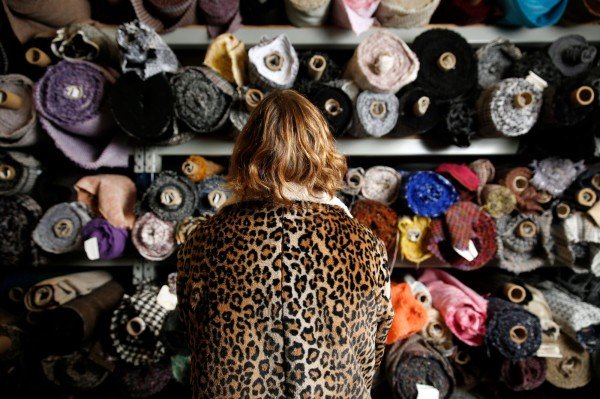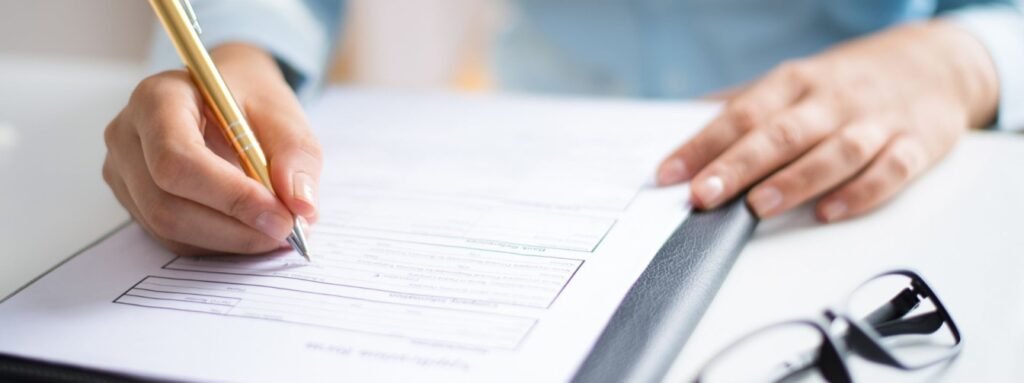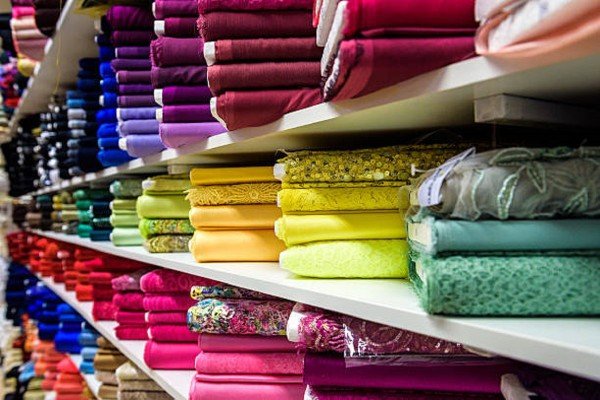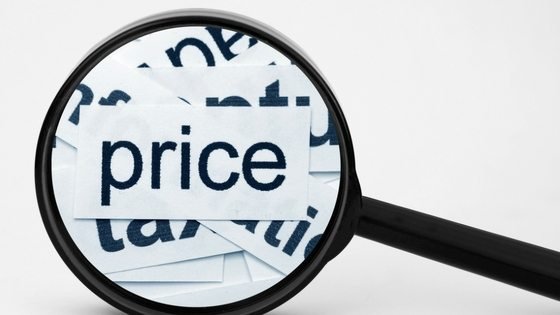
I. Introduction
The importance of China’s fabric markets for wholesalers
China’s fabric markets are important for wholesalers because they offer a wide range of high-quality textiles at competitive prices. China is the world’s largest textile producer and exporter, and its fabric markets are a key part of its textile industry. Wholesalers can find a variety of fabrics, from traditional silk and cotton to modern synthetic materials, in these markets. Additionally, the fabric markets allow wholesalers to connect with suppliers, negotiate prices and terms, and build long-term relationships. Visiting the fabric markets in person provides wholesalers with the opportunity to see and touch the fabrics, assess their quality, and discuss customization options with suppliers. Overall, China’s fabric markets are an essential destination for wholesalers seeking to source quality fabrics at competitive prices.
II. Overview of China’s Fabric Markets

A. Current state of the industry and the role of fabric markets
The industry is known for its high-quality fabrics and efficient production techniques, which have made Chinese textiles popular around the world.
The role of fabric markets in China’s textile industry is significant. These markets provide a platform for suppliers to connect with wholesalers and retailers, allowing them to showcase their products and negotiate deals. The markets offer a wide range of fabrics, from traditional silk and cotton to modern synthetic materials, and provide access to suppliers of various sizes and specializations. The markets also offer buyers the opportunity to assess the quality of fabrics in person, which is especially important for wholesalers who require large volumes of fabric.
While traditional markets still exist, there are now modern fabric markets that are equipped with the latest technology and infrastructure. These markets offer a more streamlined and efficient buying experience, with features such as online ordering systems and integrated logistics services.
B. Types of fabric markets and their locations in China
China’s fabric markets can be broadly categorized into two types: wholesale fabric markets and retail fabric markets. Here are some of the most popular fabric markets in China:

- Shaoxing Keqiao Textile Market: Located in the city of Shaoxing in Zhejiang Province, this market is one of the largest textile markets in China. It features a wide variety of fabrics, including cotton, silk, and synthetic materials, and has over 20,000 fabric vendors.
- Guangzhou Textile Exchange Park: Located in the city of Guangzhou in Guangdong Province, this market is a modern textile trading center that offers a wide range of fabrics, including silk, cotton, wool, and denim. It also has a large exhibition center that hosts textile fairs and events.
- Zhongda Fabric Market: Located in the city of Guangzhou, this market is known for its high-quality fabrics and accessories. It features over 3,000 vendors and specializes in silk, cotton, and linen fabrics.
- Yiwu International Trade City: Located in the city of Yiwu in Zhejiang Province, this market is the largest wholesale market in the world and features a wide range of products, including textiles. The textile section offers a variety of fabrics, including silk, cotton, and synthetic materials.
- Beijing Silk Street: Located in the city of Beijing, it’s a popular tourist destination and offers a wide range of silk fabrics, garments, and accessories. It is known for its high-quality silk and traditional Chinese designs.
III. Preparing for the Visit
A. Researching the markets and identifying potential suppliers

- Online Research: The first step is to conduct online research on fabric markets and suppliers in China. There are several online directories, such as Alibaba and Made-in-China, that provide information on suppliers and products. You can also search for reviews and ratings of the fabric markets and suppliers to get a better idea of their reputation and quality of service.
- Attend Trade Shows: Attending trade shows is a great way to meet potential suppliers and learn about the latest trends and products in the industry. Some of the popular textile trade shows in China include the China International Textile and Apparel Trade Fair (CITME), the Shenzhen International Trade Fair for Apparel Fabrics and Accessories, and the Intertextile Shanghai Apparel Fabrics.
- Visit Fabric Markets: Visiting fabric markets in person is the best way to assess the quality of fabrics and meet potential suppliers. Before visiting a market, make a list of the fabrics and products you are interested in purchasing and research the vendors that specialize in those products.
- Verify Suppliers: Before placing an order, it is important to verify the supplier’s credentials and reputation. You can ask for references and samples, and conduct a background check on the company.
- Negotiate Deals: Once you have identified potential suppliers, negotiate deals and prices that work for both parties. It is important to be clear about the quality, quantity, and delivery terms of the order.
B. Obtaining necessary documents and permits

When importing fabrics from China, wholesalers must obtain the necessary documents and permits to comply with customs regulations and ensure a smooth importing process. Here are some of the documents and permits that wholesalers may need:
- Import License: Wholesalers must obtain an import license to import fabrics into their country. The requirements for an import license may vary depending on the country of import, so it is important to check with the local customs office.
- Bill of Lading: The Bill of Lading is a document that details the shipment of goods and serves as proof of ownership of the cargo. It includes information such as the name of the exporter and importer, the quantity and description of the goods, and the terms of shipment.
- Commercial Invoice: The commercial invoice is a document that details the value of the goods being shipped and includes information such as the seller’s and buyer’s name and address, the quantity and description of the goods, and the price.
- Certificate of Origin: The certificate of origin is a document that certifies the country of origin of the goods being shipped. It is required for customs clearance and to determine the tariff rates for imported goods.
- Inspection Certificate: Some countries may require an inspection certificate to ensure that the goods meet certain quality and safety standards.
- Tariff Classification Number: Wholesalers must determine the tariff classification number for the fabrics they are importing. The tariff classification number is used to determine the amount of duty that must be paid for the imported goods.
It is important to work with a reliable freight forwarder or customs broker who can assist with obtaining the necessary documents and permits and ensure compliance with customs regulations. They can also help with shipping logistics and provide guidance on any additional requirements or restrictions.
C. Budgeting and calculating expenses

- Cost of Fabrics: The cost of the fabrics will depend on the type, quality, and quantity of the fabrics ordered. Wholesalers should research the market and compare prices from different suppliers to get the best deal.
- Shipping Costs: Shipping costs will depend on the size and weight of the shipment, as well as the shipping method and destination. Wholesalers should consider factors such as transit time, insurance, and customs clearance fees when calculating shipping costs.
- Customs Duties and Taxes: Wholesalers must pay customs duties and taxes on imported goods. The amount of duty and tax will depend on the value and type of the goods, as well as the country of import. Wholesalers should research the customs regulations of their country to determine the duty and tax rates.
- Freight Forwarder Fees: Wholesalers may work with a freight forwarder to handle the logistics of shipping the fabrics. Freight forwarder fees may include handling, documentation, and other services. Wholesalers should request quotes from different freight forwarders and compare fees.
- Quality Control and Inspection Fees: Wholesalers may want to conduct quality control inspections on the fabrics before shipment to ensure that they meet the required standards. Inspection fees may include testing, sampling, and other services.
- Currency Exchange Rates: Wholesalers should consider the currency exchange rates when calculating expenses, as they can have a significant impact on the final cost.
It is important to create a detailed budget and consider all expenses when importing fabrics from China. Wholesalers should also factor in any unexpected expenses or delays that may arise during the importing process.
IV. Navigating the Markets

A. Tips for navigating the markets efficiently
Navigating the fabric markets in China can be overwhelming for first-time visitors. Here are some tips to navigate the markets efficiently:
- Research Beforehand: Do your research and identify the markets that specialize in the type of fabrics you are looking for. This will help you to narrow down your search and avoid wasting time.
- Bring a Translator: It is important to have a translator who can help you communicate with the suppliers. Some suppliers may not speak English, so having a translator can help you to negotiate prices and discuss the details of your order.
- Dress Comfortably: The markets can be crowded and require a lot of walking, so it is important to dress comfortably and wear comfortable shoes.
- Be Prepared to Negotiate: Negotiation is a common practice in the markets, so be prepared to negotiate prices with the suppliers. It is important to have a clear understanding of the quality and quantity of the fabrics you are looking for to ensure that you get a fair price.
- Take Notes and Photos: Take notes and photos of the fabrics you are interested in, as well as the suppliers’ contact information. This will help you to keep track of your options and follow up with suppliers later.
- Be Open-Minded: Be open-minded and willing to explore different options in the markets. You may find fabrics that you did not expect or suppliers who offer unique services.
B. Identifying quality fabrics and suppliers

- Inspect the Fabrics: Inspect the fabrics closely to ensure that they meet your quality standards. Check for flaws, defects, and inconsistencies in the fabric. Request samples of the fabrics to test for quality, durability, and colorfastness.
- Check the Supplier’s Reputation: Check the supplier’s reputation by researching their history and reading reviews from previous customers. Look for suppliers with a track record of providing quality products and excellent customer service.
- Verify Certifications: Verify that the supplier has the necessary certifications for their products, such as Oeko-Tex or REACH certifications, which ensure that the fabrics are free from harmful substances and comply with environmental standards.
- Visit the Supplier’s Factory: Visit the supplier’s factory to see the production process and ensure that they meet your quality standards. Check for adherence to safety standards, cleanliness, and ethical labor practices.
- Check the Supplier’s Communication: Communication is key to a successful business relationship. Check that the supplier is responsive and communicates clearly and effectively.
- Compare Prices: Compare prices from different suppliers to ensure that you are getting a fair price for the fabrics. Beware of prices that are significantly lower than the market average, as they may indicate poor quality fabrics or unethical practices.
By following these tips, you can identify quality fabrics and suppliers in China’s fabric markets and make informed decisions for their businesses.
V. Negotiating and Closing Deals

A. Strategies for negotiating prices and terms
- Research: Do your research on the market price for the fabric you are looking for. Knowing the market price will give you a better understanding of what to expect when negotiating.
- Build a Relationship: Building a relationship with the supplier can be beneficial when negotiating. They may be more willing to give you a better deal if they feel that they have a good relationship with you.
- Know Your Limits: Know your budget and what you are willing to pay for the fabric. It is important to have a clear idea of your limits before entering into negotiations.
- Bundle Orders: Consider bundling your orders to get a better deal. Larger orders may result in better pricing and more favorable terms.
- Be Flexible: Be willing to compromise on certain terms if it means getting a better deal. For example, if the supplier cannot meet your desired delivery date, consider extending the deadline in exchange for a better price.
- Walk Away: Sometimes it may be best to walk away if the supplier cannot meet your needs. If the price or terms are not acceptable, it is better to find another supplier who can meet your needs rather than settling for less.
- Be Polite and Professional: Remember to be polite and professional throughout the negotiation process. This can help build trust with the supplier and lead to a more successful outcome.
B. Finalizing transactions and ensuring quality control

- Confirm the Order: Before finalizing the transaction, confirm the details of the order with the supplier. Double-check the quantity, price, delivery date, and other important terms.
- Create a Purchase Order: Create a purchase order that outlines all the details of the order. This serves as a written agreement between you and the supplier and can be used to resolve any disputes that may arise.
- Inspect the Fabric: Once the fabric has been delivered, inspect it to ensure that it meets your quality standards. Check for defects, color accuracy, and consistency.
- Sample Testing: Consider testing a sample of the fabric before placing a large order. This can help to ensure that the fabric meets your quality standards and specifications.
- Resolve Disputes: If there are any issues with the fabric or the transaction, work with the supplier to resolve them. Be clear about your expectations and work together to find a solution that satisfies both parties.
- Pay on Time: Pay the supplier promptly and according to the agreed-upon terms. This can help to build trust with the supplier and establish a good working relationship.
- Provide Feedback: After the transaction is complete, provide feedback to the supplier. Let them know what you liked about their service and where they could improve. This can help to build a long-term relationship and improve future transactions.
By following these tips, wholesalers can ensure that transactions are finalized smoothly and that the fabric they receive meets their quality standards.
VI. Shipping and Logistics

A. Understanding shipping and logistics processes in China
- Shipping Methods: There are several shipping methods available, including air freight, sea freight, and express delivery. Each method has its own advantages and disadvantages in terms of cost, speed, and reliability.
- Shipping Costs: Shipping costs vary depending on the shipping method, weight, volume, and distance. It’s important to calculate shipping costs into your budget when placing orders.
- Customs Clearance: All goods entering or leaving China must go through customs clearance. This process can be time-consuming and may require additional documentation.
- Documentation: Shipping fabric from China requires specific documentation, including commercial invoices, packing lists, and bills of lading. Make sure to provide accurate and complete documentation to avoid delays and additional charges.
- Shipping Insurance: Consider purchasing shipping insurance to protect your fabric in case of damage, loss, or theft during transit.
- Shipping Time: Shipping times can vary depending on the shipping method, distance, and customs clearance. Make sure to factor in shipping time when placing orders and planning inventory.
- Freight Forwarders: Consider working with a reputable freight forwarder who can handle the shipping and logistics process for you. They can help you navigate the complexities of shipping from China and ensure that your fabric arrives on time and in good condition.
B. Ensuring timely delivery and quality control

- Production Monitoring: Work with your suppliers to monitor the production process to ensure that the fabric is being manufactured according to your specifications and timelines.
- Quality Control Inspections: Conduct quality control inspections during and after production to ensure that the fabric meets your quality standards. You can hire a third-party inspection company to perform these inspections on your behalf.
- Shipping Timeframes: Plan your orders with enough lead time to account for production, shipping, and customs clearance times. Factor in any potential delays, such as holidays or unforeseen circumstances.
- Communication: Maintain open communication with your suppliers and freight forwarders to ensure that you are aware of any delays or issues that may arise during the production and shipping process.
- Shipping Insurance: Consider purchasing shipping insurance to protect your fabric in case of damage or loss during transit.
- Sample Testing: Before placing a large order, request a sample of the fabric to ensure that it meets your quality standards. This can save you time and money in the long run.
- Payment Terms: Negotiate payment terms that incentivize your suppliers to deliver the fabric on time and in good condition.
VII. Conclusion
To make the most of your trip to China’s fabric markets, it’s essential to plan ahead, budget wisely, negotiate effectively, and ensure quality control. Whether you’re an experienced wholesaler or new to the industry, these strategies can help you source the fabrics you need and grow your business. With a little patience, perseverance, and an open mind, you can navigate these markets like a pro and take your business to new heights.


